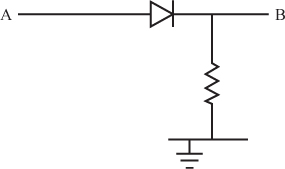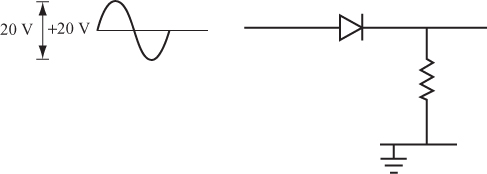Diodes in AC Circuits Produce Pulsating DC
1 You can use diodes for several purposes in AC circuits, where their characteristic of conducting in only one direction is useful.
2 Figure 11.2 shows the circuit in Figure 11.1 with a 20 Vpp AC input signal centered at + 20 volts DC.
3 Figure 11.3 shows a circuit with 20 Vpp AC input signal centered at 0 volts DC.
Get Complete Electronics Self-Teaching Guide with Projects now with the O’Reilly learning platform.
O’Reilly members experience books, live events, courses curated by job role, and more from O’Reilly and nearly 200 top publishers.



